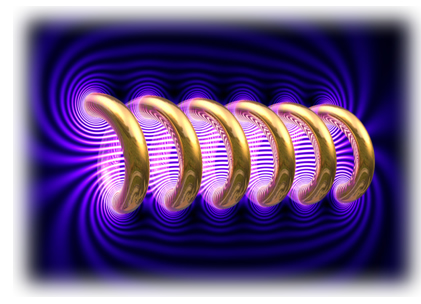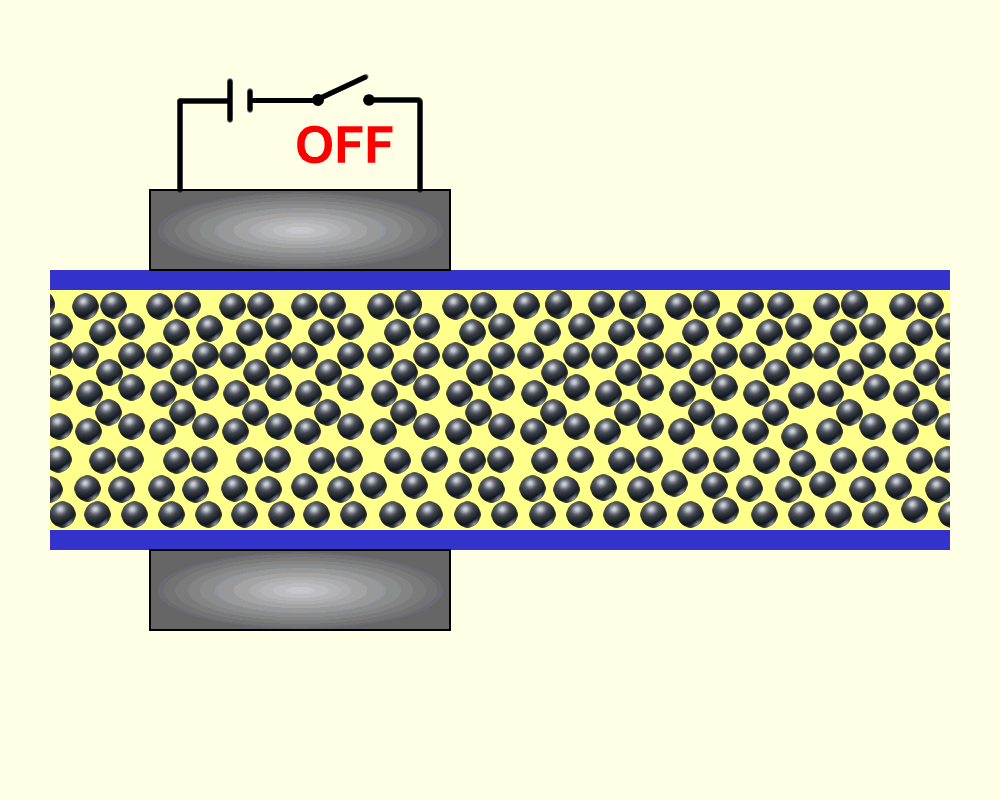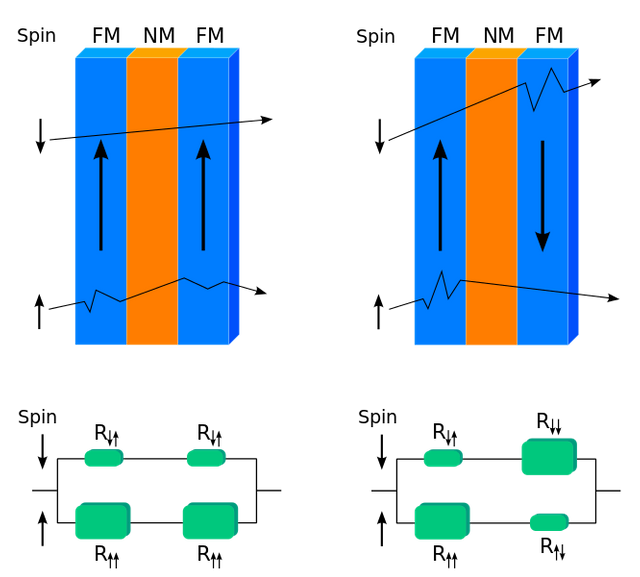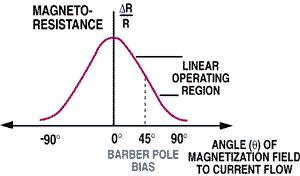What Is A Magneto Resistor :Types, Characteristics And Applications
Magnetoresistance is the characterstic of a material to change its electrical resistance when an externally-applied magnetic field. This effect was later on used to build a special type of variable resistor known as magneto-resistor.
Back in the year 1856, William Thomson a Scots-Irish mathematical physicist and engineer while experimenting with iron pieces discovered a phenomenon called magneto-resistance while he was experimenting with iron pieces.

Let us have a brief about a magneto – resistor: its working principle, characteristics and applications.
What is a Magneto Resistor?
When the iron pieces were kept in magnetic feild, their electrical resistance somehow changed when the direction of magnetic feild with respect to the current flow through them changed. This effect was found by Sir William Thompson while he was experimenting with iron pieces and he got the same results with nickel too.
Thus a new effect or phenomenon named as magneto-resistance was introduced to the world. On further study of this effect a new type of variable resistor was formed. The electrical resistance of this resistor varied in accordance with the magnetic field strength around it. It was also seen that the current through this resistor also changes with change in magnetic force applied to it.

We must note here that magnetic field is a vector quantity meaning, it is specified in both direction and magnitude, just as a current has its direction and magnitude..
Thus, we can define a magneto resistor as a special kind of variable resistor, whose electrical resistance depends on the external magnetic force applied to it.
Magneto Resistor Symbol
Schematic circuit diagram of the magneto resistance represented by the symbol is shown below. The arrow through the resistor symbol signifies a variable resistor, while letter below and arrows denotes that the variable resistor used is in magnetic field.

It's quite easy to understand how the magneto resistor works; it is based on the effect already mentioned: the magneto resistance.
Principle of Magneto Resistor
To understand the working principle of a magneto resistor, let us first recall our concept that relates the direction of current and that of magnetic force. Simply, The magnetic field strength is highest, when the current is in same direction as that of the magnetic force, while weakest when it is 90 degrees to the magnetic force.
So how does this effect cause a change in resistance of the material? The answer is simple. Current is nothing but flow of free electrons. When a material is placed in absence of any magnetic force, these electrons move in an orderly fashion, mostly in straight lines.
When it is subjected to magnetic force, the free electrons get excited and start moving in an indirect motion creating collision among them. These collisions restrict the flow of free electrons such that only few can flow freely. In other words the flow of current is restricted, that means the electrical resistance has increased with increase in magnetic field strength.

Magneto resistor principle, Image source: Wikimedia commons
Thus, to put in short terms the change in resistance is directly proportional to the magnetic field strength around it, or we can say, the resistance of a magneto resistor increases with increase in magnetic field strength and decreases with a decrease in magnetic field strength.
According to the types of magneto-resistance effect, magneto resistor are also devided into three groups. Lets understand about them in brief.
Types of Magneto Resistor
1. Based on Giant Magneto-resistance:-
It was discovered by two scientists Albert Fert and Peter Grunberg, and this effect is commonly observed in ferromagnetic materials. The resistance here depends on whether the adjacent ferromagnetic layers are aligned in parallel or anti-parallel. If they are in parallel alignment then the resistance is low, while the resistance is high when they have an anti-parallel alignment.
2. Based on Extra ordinary Magneto-resistance:-
Discovered in the year 2000, this effect occurs in semiconductor hybrid systems under transverse magnetic field. The resistance of the semiconductor hybrid system increases under the transverse magnetic field. It is low in the absence of this magnetic field. This effect can be considered greater than the Giant magneto resistance effect.
3. Based on Tunnel Magneto-resistance:-
Discovered by M. Julliere in 1975, this effect is true to its name. The magnitude of the current that flows through a “tunnel”, which is nothing but an insulator, that connects two ferromagnetic electrodes, here depends on the direction of magnetization. When the magnetization of the two ferromagnetic electrodes is parallel to each other, then the current through the “tunnel” is high. Similarly an anti-parallel alignment of magnetization of the two ferromagnetic electrodes decreased the flow of current.

The characteristic curve of the magneto resistor is shown in figure below. Here we see that the sensitivity of the magneto resistor varies with the magnetic field strength.

From the curve we see that when effect of magnetic strength is zero, the sensitivity is zero. Also, as the magnetic field strength increases, the magneto resistor started showing an increase in resistance. However, we see that the curve starts bending down after a certain point, C. This is due to saturation of the magnetic field. Beyond this if the magnetic field is increased, the resistance starts to decrease.
After learning about working and characteristic of a magneto resistor, let us now check some of the common uses and applications of the magneto resistance.
Magneto Resistor – Uses and Applications
Since magneto resistors are directly dependent on the magnetic field applied, these magneto resistors find a good use in magnetic field sensing devices. Some of them include, electromagnetic compass, magnetometers which measure magnetic field intensity and direction, position sensors and ferrous metal detection. Position sensors can be angle, rotary or linear position sensors. They also have very much use in bio sensors and hard disk drives.
Conclusion:
Magneto-resistors are variable resistors whose resistance depends on magnetic field strength. Direction if current = direction of magnetic force, then magnetic field intensity is high. This means the resistance is high. Resistance of magneto-resistor is directly proportional to the strength of magnetic field. This effect is called magneto resistance, discovered by Sir William Thomson in 1856.Three types of magneto resistance effect exists today, Giant magneto resistance, Extraordinary magneto resistance and tunnel magneto resistance. The characteristic curve shows resistance of magneto resistor directly dependent on the magnetic field strength. Most prominent uses include those involving magnetic field sensors, like electromagnetic compass, magnetometers etc. Also used in bio sensors and hard disk drives.

References used:
Support @steemstem and the #steemstem
project - curating and supporting quality STEM
related content on Steemit

Magneto- resistor's are , I suppose, rare kind of electrical component. Thanks for sharing the informative article.
This comment has received a 0.11 % upvote from @speedvoter thanks to: @amity123, @amity123.
This comment has received a 0.50 % upvote from @booster thanks to: @amity123.